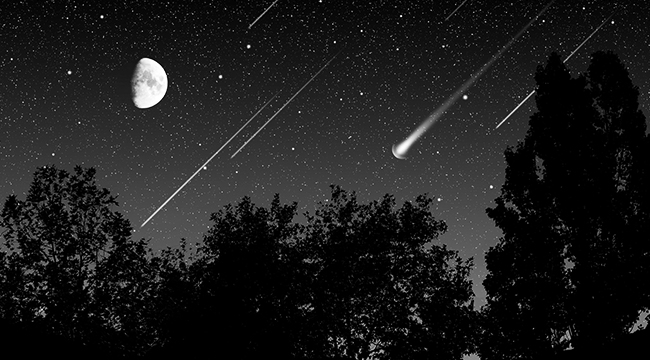
For as long as humanity has looked to the sky, we’ve seen the Lyrid meteor shower. Records of the Lyrids, the oldest known annual meteor shower, date back at least to 687 BC, and may go back even further. That makes them not just a beautiful show in the sky, but also a deep connection to our collective past as a human race.
Want to check it out? Here’s what you need to know.
- The Lyrids are actually bits falling off a comet: Specifically, they’re falling off the comet C/1861 G1 Thatcher, which has an orbit of 415 years, one of the shortest for a comet in our solar system. That’s why it’s so consistent. And as it travels, it leaves a huge trail of debris behind it that we swing through every year.
- Every year in mid-to-late April, the Earth and Thatcher’s orbit intersect, causing a meteor shower: It’s not quite like clockwork; the Lyrids can pop up anywhere from April 16th to April 26th. This year, though, they’ll be at their most intense on the weekend, April 21st and April 22nd. Saturday will be the best time to see them, as the moon will be slightly less bright that evening.
- Looking for when to watch the shower and how to see it? Head for somewhere dark and prepare for a long night: The best time to watch the Lyrids is when they’re most visible late at night, after midnight, in part because that’s when light pollution is lowest. You’ll still want to go somewhere that’s dark at night, such as a rural area or camping site, and get some elevation to get away from low-lying light sources. Oh, and bring some hot coffee or tea and bundle up; April is still a relatively chilly month, and hypothermia doesn’t improve the stargazing experience.
https://www.instagram.com/p/BTROyNzF80F/
- Want to photograph them? Then come prepared: The Lyrids aren’t the brightest of showers, so good photographs of them require a little prep, and you’ll probably want to step it up from your smartphone. You’ll want a camera you can lock down on a tripod, and that can take continuous photos until the battery dies, and then you just swap in another battery. In general, avoid “digital” settings; you’ll get better images when you don’t push the camera’s internal processor. For lenses, you’ll want something that offers a reasonably wide frame without going so wide you lose the light; try a lens of 28mm to 50mm. You’ll also want to open your aperture up all the way, with a nice long shutter speed. As or framing, find something with a nice silhouette like a physical structure that isn’t heavily lit up, like a cabin, to frame into the shot while filling the frame with as much sky as possible. Even the treeline might work with just a little moonlight gracing the leaves. Finally, take a few shots before the shower starts just to ensure you’re not overexposed.
So bundle up, find a great campsite, and enjoy one of the most ancient sights we know as a species. And if you get any amazing pictures, be sure to share them with our Instagram!






